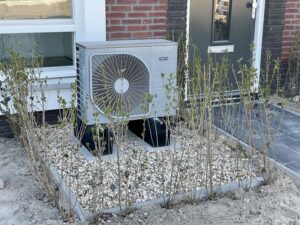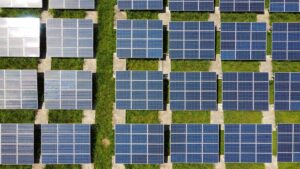Nuclear energy is becoming an increasingly popular form of energy production as technological advances have made nuclear plants safer and more reliable.
Nuclear power plants generate electricity in various ways, but all are based on the principles of nuclear fission.
There are several Pros and cons of Nuclear Energy over other forms of energy production, including its low carbon footprint, high efficiency, beneficial economical impact, and cost savings for consumers.
Nuclear energy’s potential for catastrophic accidents is its major disadvantage. The Chornobyl disaster in 1986 serves as an example of this kind of destruction. Due to human error and negligence in reactor maintenance, radiation was released over millions of square miles in Europe and beyond. This event resulted in thousands of deaths from radiation exposure, leading to severe environmental damage that will take decades to repair.
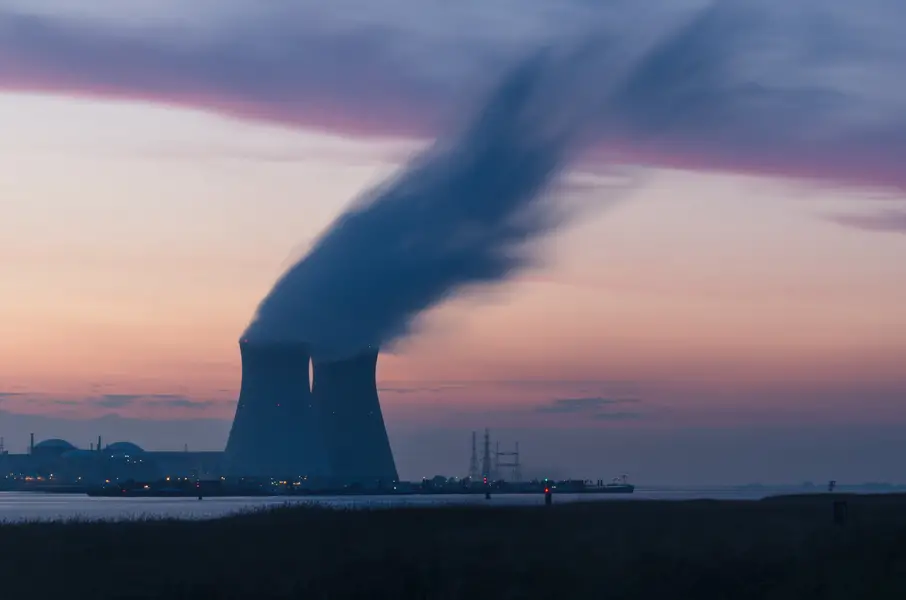
How Nuclear Power Works
Nuclear power is a form of energy production that harnesses the heat from nuclear reactions.
It is one of the world’s most efficient and sustainable energy sources, providing around 10% of global electricity. Nuclear power plants are responsible for producing this large-scale, low-carbon electricity by splitting atoms to generate heat and steam through a process known as nuclear fission.
- The process begins with uranium fuel rods containing enriched uranium being loaded into an enclosed reactor core.
- The uranium fuel rods are then bombarded with neutrons which cause them to split apart in a chain reaction releasing large amounts of energy, heat, and radiation.
- This heat is used to boil water, producing steam that drives turbines connected to generators that create electricity.
- The remaining radioactive material can be reused or safely stored away from human exposure until it decays and becomes harmless.

What is Nuclear Fission?
Nuclear fission is a process of splitting the nucleus of an atom into smaller nuclei.
It is a reaction that occurs naturally in some isotopes or can be triggered by bombarding atoms with neutrons. Nuclear fission releases large amounts of energy.
Nuclear fission requires the presence of certain isotopes with high atomic numbers, such as uranium-235 (U-235). This process produces additional neutrons, which can cause other nearby U-235 atoms to split and release energy in the form of heat or radiation.
Environmental Impact of Nuclear Energy
1. Is Nuclear Energy Renewable?
Nuclear energy does not qualify as renewable.
Nuclear fission involves splitting atoms from uranium to create energy, which would be considered non-renewable because it relies on the limited supply of uranium fuel rods. Once the fuel rods are spent, they must be disposed of to prevent contamination.
2. Uranium Availability is Finite.
Uranium-235 (U-235) is an isotope of uranium that has been used for nuclear energy production since the dawn of the atomic age. It is the most common fissile isotope, meaning it can sustain a nuclear chain reaction and be used in nuclear power plants. Its availability is key to meeting global energy demands, making its presence and abundance vitally important.
U-235 can be found naturally in uranium ore deposits worldwide, but it occurs in small concentrations.
3. Reuse of Spent Nuclear Fuel
Spent Nuclear Fuel (SNF) is a radioactive material generated during the operation of nuclear power plants. Although most SNF is safely stored, there have been calls to reuse it – a practice known as reprocessing.
Proponents of reprocessing argue that it can efficiently reduce the volume of SNF waste and increase our energy security by reusing existing fuel.
4. Nuclear Energy Produces Low-Carbon Pollution
Nuclear energy has several advantages over other forms of energy production in that it produces very few emissions when generating power. Using it as a source of electricity does not contribute significantly to global warming and climate change.
Nuclear power plants can produce vast amounts of carbon-free electricity, offering a clean alternative to traditional fossil fuels. As governments worldwide strive towards net zero carbon emissions, nuclear energy is becoming an increasingly attractive option for providing reliable and affordable base-load electricity.
5. Radioactive Waste Disposal
One of the biggest concerns about nuclear power plants is radioactive waste disposal. Developing efficient and effective ways to handle this hazardous material has become increasingly important.
The most common form of disposal for nuclear waste is deep geological repositories, where the containers are stored in underground areas that are very hard to reach. This method helps minimize potential radiation leakage and contamination of the environment over time. Additionally, modern techniques such as vitrification can solidify the waste into glass-like substances, further reducing danger levels associated with the material’s dissemination into nature.
Despite these advances, some experts remain concerned that there has been no foolproof way to ensure the safe storage and containment of such hazardous materials for many years.
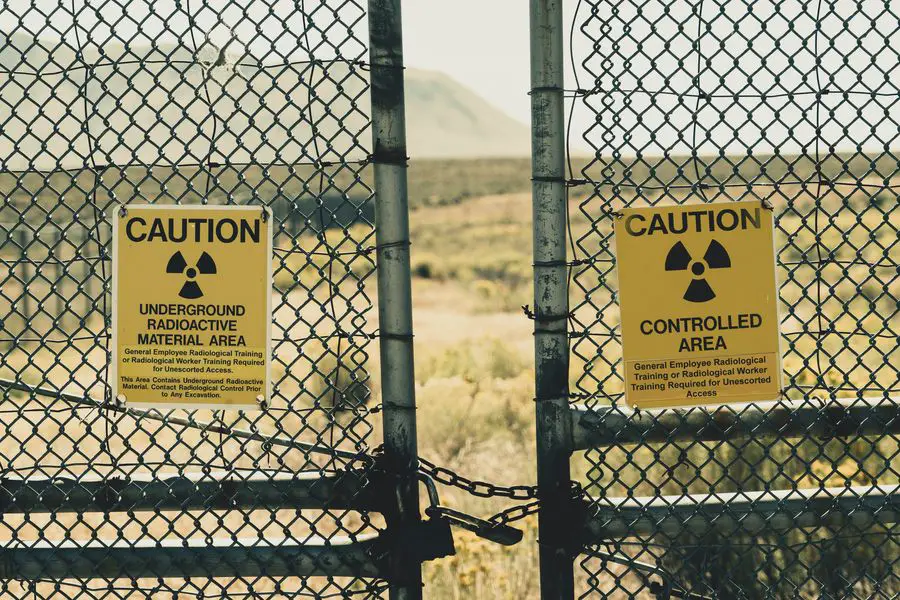
Photo by Dan Meyers on Unsplash
6. Nuclear Accidents
A nuclear accident releases hazardous radiation into the environment that can damage people and wildlife and has long-term consequences such as soil contamination and water pollution. Nuclear accidents are rare, but when they do occur, the results can be catastrophic. Some of the most famous ones occurred in Chornobyl in 1986 and Fukushima Daiichi in 2011.
The effects of a nuclear accident depend on several factors, including the type of reactor involved, its age, safety systems installed at the site, local geography, and weather conditions.
In addition to immediate death or injury from radiation poisoning or fires caused by explosions at the plant, radioactive particles released during an accident can travel great distances and spread around for months afterward.
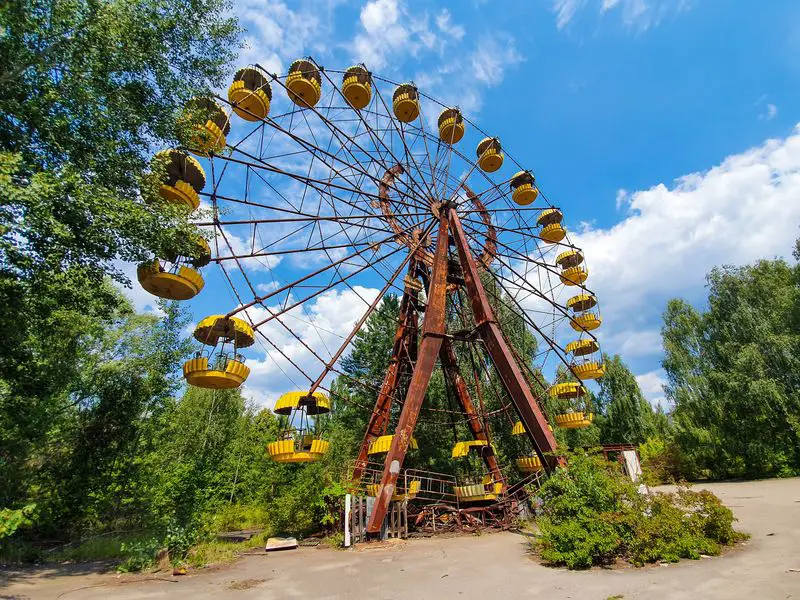
Photo by Ilja Nedilko on Unsplash
7. What Happens if a Nuclear Power Plant Leaks?
Radioactive material escaping from a plant due to an equipment malfunction or improper maintenance can cause serious health problems for nearby people.
Any contamination of the environment caused by a leak could be detrimental to natural ecosystems and require costly repair efforts.
The degree of impact on human health and the environment depends on how much radiation is released and how widely it spreads.
8. Eutrophication Caused by Radioactive Waste Can Lead to the Death of Aquatic Life
Nuclear energy eutrophication is a process of excessive water enrichment with nutrients, leading to the accelerated growth of aquatic plants and algae. Nuclear power plants are known to be potential contributors to this phenomenon. As these sources produce thermal pollution in the form of heated water, they can also increase the amount of phosphorous and nitrogen in the local environment.
The primary source of thermal water pollution from nuclear power plants comes from the cooling systems that regulate temperatures within the plant’s reactors. As hot wastewater is released into nearby bodies of water, it disrupts aquatic ecosystems by raising temperatures and introducing high concentrations of pollutants into delicate habitats.
The higher temperatures caused by nuclear power plants can lead to an overgrowth of aquatic vegetation, leading to oxygen depletion and a decrease in biodiversity.
9. Is Nuclear Energy Production Water Intensive?
To understand the role of water in nuclear power production, we must first examine the two main processes used in commercial reactors – boiling water reactors (BWR) and pressurized water reactors (PWR).
- BWRs use steam from boiling water to turn turbines and generate electricity, while
- PWRs use steam from heated but not boiled pressurized water.
Both reactor types require large amounts of cooling water – usually sourced from nearby rivers or lakes – which circulates through heat exchangers as part of a closed-loop system.
10. How Much Land do You Need for a Nuclear Power Plant?
Generally speaking, nuclear plants only require a small amount of land. The amount of land necessary for constructing and operating a nuclear plant depends on several factors, including the type of reactor and the safety systems in place to protect the public from radiation.
The Nuclear Regulatory Commission (NRC) sets requirements for different nuclear reactors regarding land use.
For safety reasons, NRC regulations stipulate that certain distances must be maintained between areas where radioactive materials are stored or used and nearby public structures.
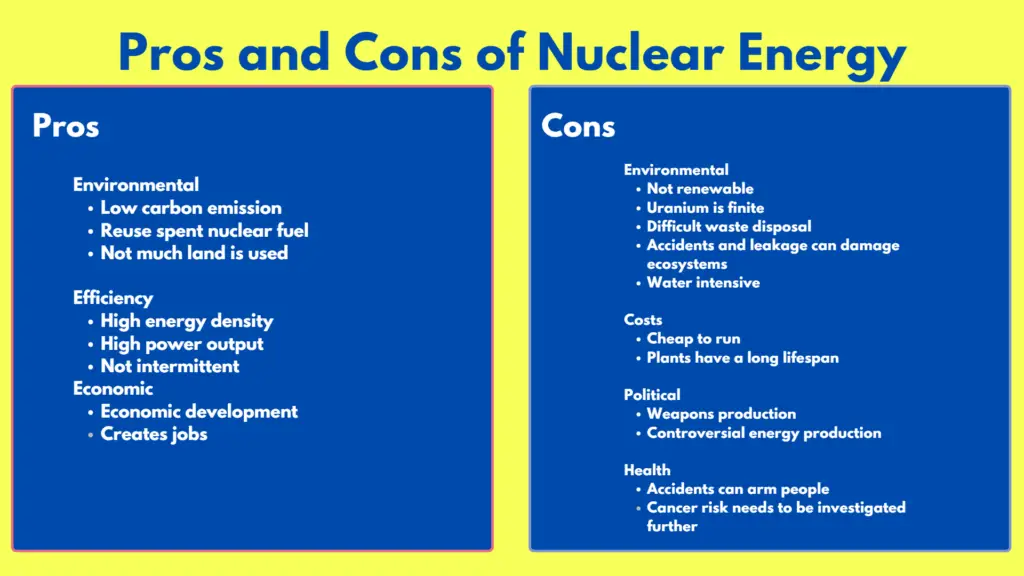
Nuclear Energy Efficiency
1. Nuclear Energy Provides a High Energy Density
Uranium is a radioactive element used in nuclear energy production since the dawn of the atomic age. With its natural abundance and high energy density, uranium can produce more energy per unit mass than any other fuel source.
The most common form of uranium used in nuclear reactors is uranium-235, which has an exceptionally high energy density compared to other fuels. 1 kg of uranium-235 releases approximately a million times more energy than 1 kg of coal. This means that significantly less fuel material needs to be processed for use as reactor fuel when compared with fossil fuels like oil or coal.
2. Nuclear Energy Has a High Power Output.
The benefits of nuclear energy are numerous, but arguably its biggest appeal is its high power output.
Nuclear power plants produce more than 92 percent of the time at maximum capacity annually. Twice the power generated via natural gas and coal, and three times more power compared to renewable energies such as wind and solar.
3. Is Nuclear Power Base Load or Peak Load?
A base load of energy is an amount of electricity that needs to be supplied constantly and reliably, and nuclear power plants are well-suited for this task. Nuclear power plant reactors produce electricity at a nearly constant output level, making them reliable and efficient.
Because it is a base load energy, nuclear energy is not intermittent. Unlike solar and wind power, nuclear energy does not depend on the weather or time of day for its production. Instead, it produces consistent levels of electricity.
The main advantage of using nuclear power is its ability to produce large amounts of base-load electricity without emitting greenhouse gases into the atmosphere.
Costs
1. Nuclear Energy Has High Upfront Costs
Building a nuclear plant can reach billions of dollars and take several years. Additionally, safety concerns over radiation leaks can add further expenses to account for additional safeguards for protection against such incidents.
2. Nuclear Power Plants Are Cheap to Run
Their operating costs are typically much lower than those of other sources, such as coal or natural gas.
They consume very little fuel compared to other energy sources, meaning their running costs can be kept low over time. Additionally, the maintenance requirements for these facilities are minimal compared to other forms of energy generation, reducing the overall cost associated with nuclear power production.
These expenses can be divided into two main categories: operational and management costs.Operational costs are the day-to-day expenses that go into running a nuclear power plant, including labor, fuel, maintenance, construction, and decommissioning. This includes any necessary equipment required for plant operations, such as turbines or cooling towers, and the cost of disposing of waste generated by nuclear fission. Management costs refer to the administrative tasks involved in running a plant, such as training staff, keeping records of safety protocols and regulations compliance, and ensuring regulatory compliance with environmental and other laws and regulations monitoring emissions from the reactor core.
3. Nuclear Plants Have a Long Lifespan
Nuclear plants have long lifespans, with estimates ranging from 40 to 60 years. Nuclear power plants are built to last for many decades, offering a secure energy source and reducing the need for new construction.
A nuclear plant’s lifespan is usually determined by its original design and the maintenance practices used during its operation. Plant owners must carefully inspect and upgrade components when necessary in order to ensure that their facility remains safe and efficient over time. Upgrading components may involve replacing older parts or adding advanced technologies such as digital control systems or improved safety procedures. This helps extend the life of the plant while ensuring that it remains reliable for many years to come.
Economic Impact
1. Nuclear Power Plants Can Lead to Economic Development and Create Jobs
With the right policies, nuclear energy can provide reliable electricity while stimulating economic activity and creating jobs.
Nuclear energy allows countries to develop their own power sources rather than relying on imports of fuel or electricity from other nations. This creates a stable long-term investment in their national economy and helps reduce dependence on foreign resources. Additionally, the jobs created through building and maintaining these plants are highly skilled positions that require significant training. By providing quality employment opportunities, nuclear power plants help stimulate long-term growth in the region’s economy.
Political Issues
1. Nuclear Power Energy Can Be a Target for Environmental Activism
Nuclear power energy is a powerful yet controversial form of energy. Environmental activists are convinced that nuclear power should be opposed due to safety, cost, and environmental concerns.
Nuclear power creates massive amounts of energy with minimal emissions compared to other sources, such as coal or gas-powered electricity plants. However, there are still valid concerns about the safety of nuclear reactors and the storage of waste products from these plants. Environmental militants often fear that if a disaster were to occur, it could have catastrophic consequences for people living near these facilities. Additionally, the cost associated with building and maintaining these plants is often seen as too high, given the level of risk involved.
2. Nuclear Energy Can Be Used for Weapons Production
The most notable example of nuclear weapons is atomic bombs, used during World War II by the United States to end the war with Japan. This type of weapon is known as a thermonuclear device because it uses fission reactions within its core to quickly generate tremendous amounts of heat and radiation.
Health Risks
Cancer Risk Near Nuclear Plants
Cancer risk from living near nuclear plants has long been debated. With the possibility of radiation leaks, public health officials and environmentalists alike express great concern about the potential hazards these plants pose to human health. While it is true that there are documented cases in which individuals living within proximity to nuclear power plants have developed cancer at higher rates than those who do not, researchers still struggle to determine how much risk these facilities pose definitively.
The dangers posed by radiation from a nuclear plant are not limited to outside exposure. It is also important to consider the effects on employees working directly with radioactive materials or regularly exposed to high radiation levels.
Advances in Nuclear Technology
Small modular reactors
Small modular reactors (SMRs) are an emerging technology with great potential for providing clean, reliable energy.
The main advantage of SMRs is their scalability; they can generate anywhere from 5 megawatts up to 300 megawatts, making them suitable for a range of applications, from rural communities to large cities. Additionally, they can be constructed in a fraction of the time it takes to build traditional nuclear reactors, resulting in significant cost savings and faster deployment times. Furthermore, the compact size of SMRs makes them ideal for transportation by rail or truck — meaning they can be deployed wherever there is an energy need.
Thorium Molten Salt Reactors
Thorium molten salt reactors (TMSRs) are a type of nuclear reactor that can be used to generate clean, affordable, and safe energy. TMSRs use thorium fuel dissolved in molten fluoride salts as their nuclear fuel source.
The advantages of using thorium for nuclear energy production instead of uranium include increased efficiency, safety, and low cost. Thorium is much more efficient than uranium in creating energy, meaning less fuel needs to be used over time to achieve the same power output.
Do Nuclear Energy Cons Outweigh Nuclear Energy Benefits?
Proponents of nuclear energy argue that it is a clean, reliable source of power that can provide large amounts of electricity without emitting carbon dioxide or other pollutants.
On the other hand, opponents point to safety risks associated with radiation and nuclear waste disposal and economic concerns such as high construction costs and long-term storage issues.
It is necessary to look at both sides objectively. Nuclear power plants generate electricity without burning fossil fuels and therefore do not contribute directly to air pollution or global warming; however, they present numerous potential health and environmental hazards due to their reliance on radioactive materials.
Pros and Cons of Nuclear Energy – Conclusions
While promising in terms of efficiency and low carbon footprint, nuclear energy comes with challenges.
Technological advances, such as Small Modular Reactors and Thorium Molten Salt Reactors, present potential pathways for safer and more efficient nuclear energy. However, concerns regarding waste disposal, potential accidents, and health risks continue to require meticulous attention and research.
The nuclear energy debate is multifaceted, combining technological, environmental, economic, and health perspectives.
We urge our readers to join the conversation. Do you see nuclear energy as the future of power generation? Are the risks worth the benefits? Leave your comments below and share this article with your social network to foster a broader discussion on the Pros And Cons Of Nuclear Energy.


